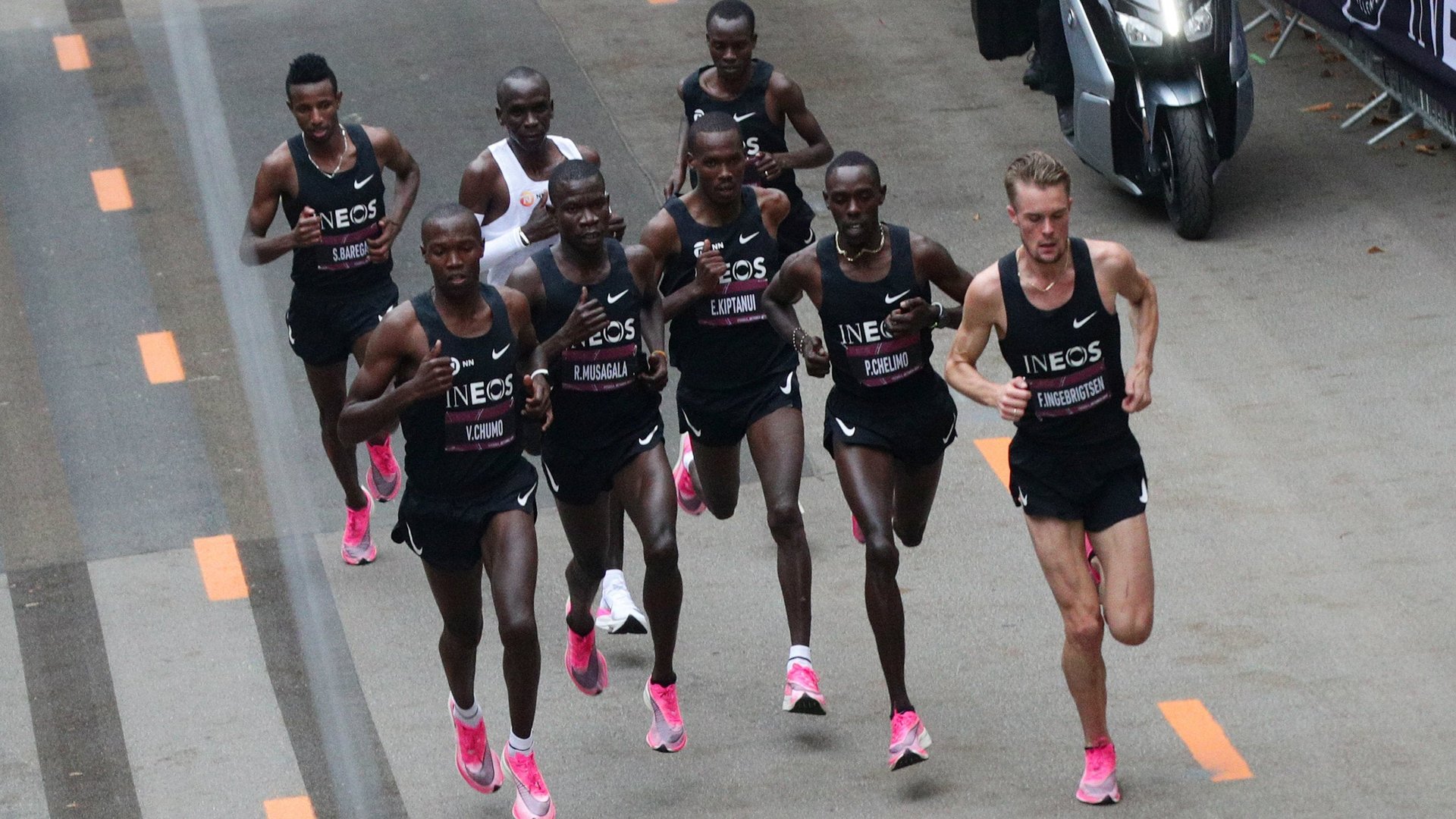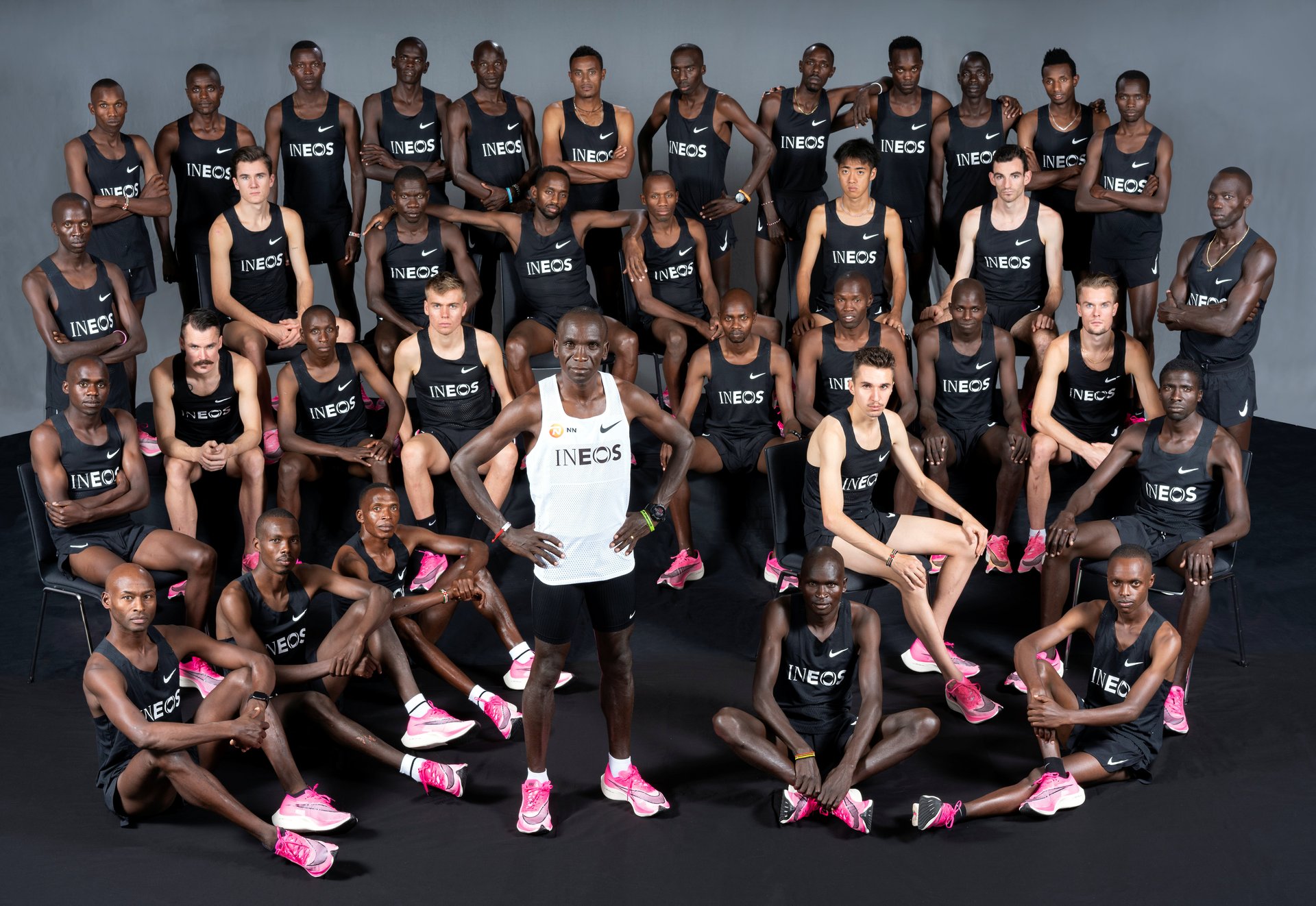It took 43 of the world’s fastest runners to break the 2-hour marathon barrier
Eliud Kipchoge became the first man ever to break the 2-hour marathon barrier yesterday, after rocketing around a course in Vienna in 1 hour 59 minutes and 40 seconds. The superhuman feat was assisted by a team of 42 other runners, representing some of the best athletes in the world.


Eliud Kipchoge became the first man ever to break the 2-hour marathon barrier yesterday, after rocketing around a course in Vienna in 1 hour 59 minutes and 40 seconds. The superhuman feat was assisted by a team of 42 other runners, representing some of the best athletes in the world.
Having a troop of pacers doesn’t undermine Kipchoge’s achievement—the 34-year-old Kenyan smashed through a symbolic barrier that some doubted would ever be broken. He averaged 4:34 per mile for 26.2 miles, an exploit that could put his name alongside Britain’s Sir Roger Bannister, who in 1954 became the first to run a sub-4-minute mile. And while Bannister’s is the name that most people remember, it’s worth keeping in mind that he was paced by track teammates Christopher Chataway and Chris Brasher.
Likewise, Kipchoge’s name is in the headlines, but there was an entire platoon of incredible athletes on the road with him yesterday. To reduce aerodynamic resistance for Kipchoge, event organizers decided there would be a group of five pacemakers running in front of him in a V formation, according to Reuters. Kipchoge would run behind them, with two more runners following behind.
The pacers worked in teams, rotating in twice during each of the course’s 9.6-km (6-mile) laps. An electric car preceded the runners, projecting a system of lasers to show where the pacers should run.

The pacemakers included Olympic 5,000-meter silver medallist Paul Chelimo, Olympic 1,500-meter champion Matthew Centrowitz, as well as Norway’s Ingebrigtsen brothers: Jakob, Filip, and Henrik. Five-time Olympian Bernard Lagat was among the ranks as well. Runners from Japan to Ethiopia and Uganda were represented, though the biggest celebrations almost certainly took place in Kipchoge’s native Kenya, where the run was broadcast on all of the country’s television stations.
Kipchoge was already seen as the greatest male marathoner ever. To prepare for the Nike-sponsored event, which was organized by chemical company Ineos, Kipchoge was running 140 miles per week at high altitude, according to Runner’s World. His effort in Vienna won’t be recognized as an official world record because of the team of rotating pacemakers and because it wasn’t an open competition. However he holds the actual world record for the distance, with a time of 2:01:39.
Kipchoge told Runner’s World in August that breaking the 2-hour mark was more important than his other accolades, including his Olympic medals. But when the day finally came and Kipchoge charged through the storied time barrier, he gave credit to the extraordinary athletes who ran in front, beside, and behind him for nearly all of the 26.2 miles. “The pacemakers did a great job, they are among the best runners of all time,” he said in a statement published by Ineos. “I thank them and appreciate them for accepting to do the job.”